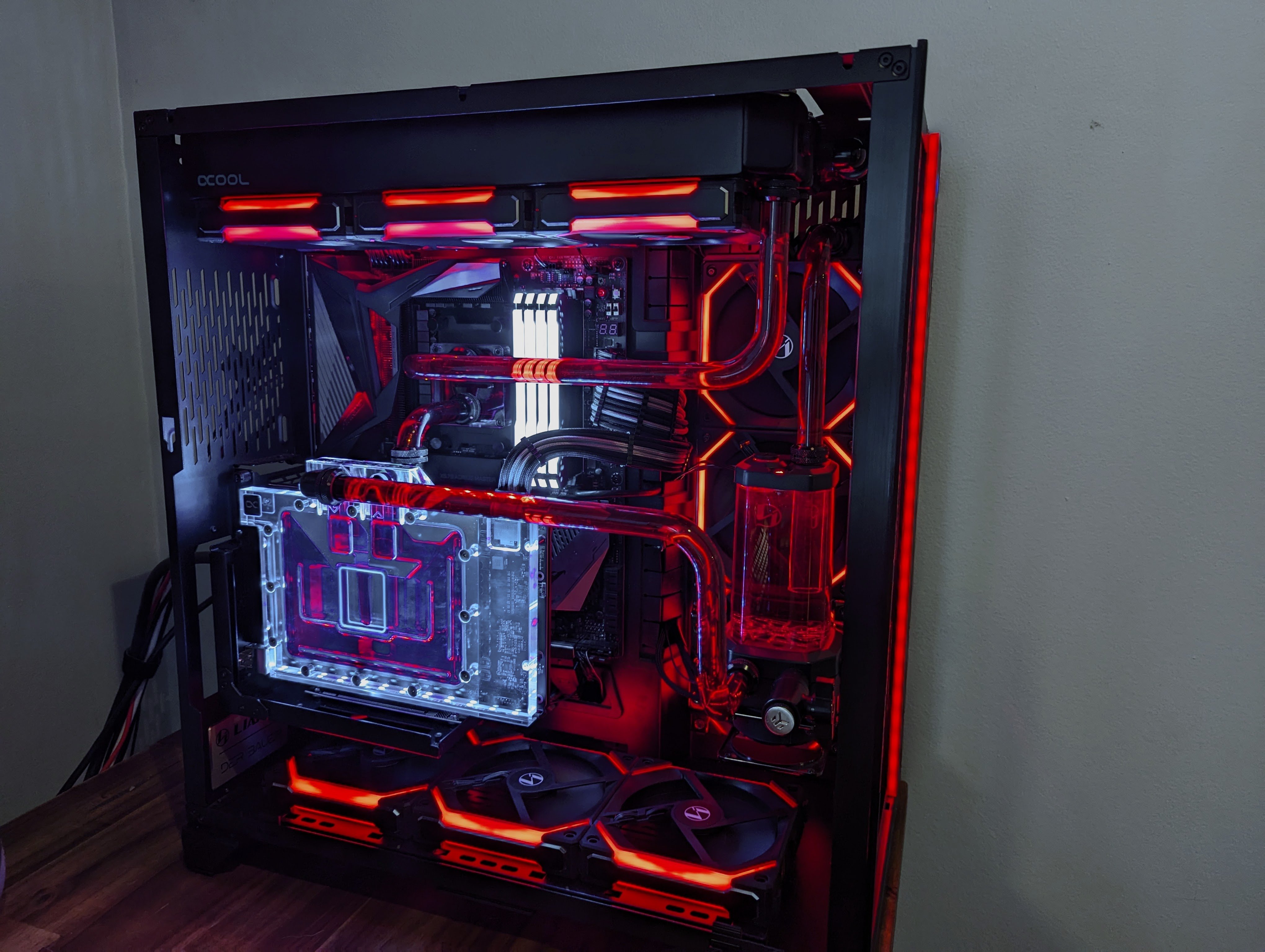I kind of hear what you're saying, but other than the GPU, and it's waterblock, the rest of the system is not new. I originally bought the motherboard in 2019 with a 3900X when the X570 AM4 platform and the Ryzen 3000 series CPU's came out. Then upgraded the CPU to a 5800X3D just over a year ago.
Why the 5800X3D? 1) Because at the time I bought it, it was THE fastest gaming CPU. It's still an incredible CPU that has a ton of performance. 2) I got the 5800X3D because I primarily play games on my PC. I don't do any video editing, streaming, or productivity work. My rig is custom built for gaming, and only gaming. Even going as far as running a customized Windows 10 install with a bunch of background processes and analytics bloat stripped out. This is what the 5800X3D was made for. You look at benchmarks and reviews of the 5800X3D and it was beating or matching the 12900K, for less money, and most importantly, for less power draw. Performs better, runs cooler, costs less. I see that as a no brainer, not a compromise. There was nothing budget friendly about any of this platform when the parts were bought.
If I was buying the platform now, new, yes... then I could see why you'd think that. Honestly at this point, I'd have to go to the AM5 platform, and the 7800X3D to get any better performance than I have already. Since the AM5 platform is brand new, I'll give it a year and wait till the Ryzen 8000 series chips launch and look at the X3D variants then. I went bleeding edge with my X570 and the Ryzen 3900X and there was definitely early adopter pains. I get more than enough performance from my system, in the games I play. I judge my happiness based on how the games feel to me. If the games load fast, feel smooth, and perform well then I'm happy. I don't look too closely at framerates, it's just about the experience for me.
Honestly, if Intel launched a platform and a CPU that had the better performance per $ with less power draw, and better thermals than AMD, then I'd probably buy that platform, but as it stands that hasn't been the case, for a while now. If the 13900K beats my 5800X3D by 10% in a game, but the difference is 270FPS vs 300FPS, I honestly see that as a null win for Intel. Because those extra 30FPS will never ever be noticed or seen. Especially when I cap my FPS to my monitor's refresh rate. Anything above that is just wasted electricity.



Update the OS and all installed applications using a single command.